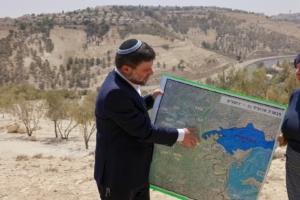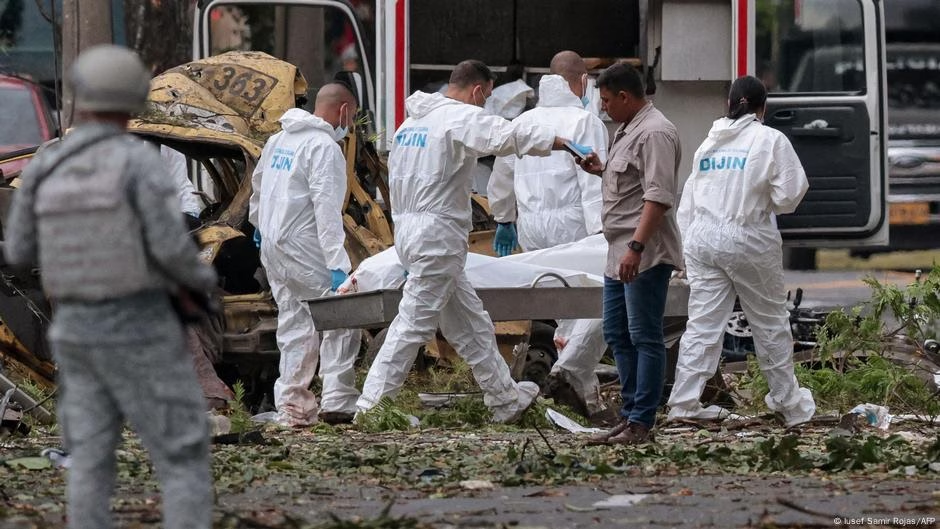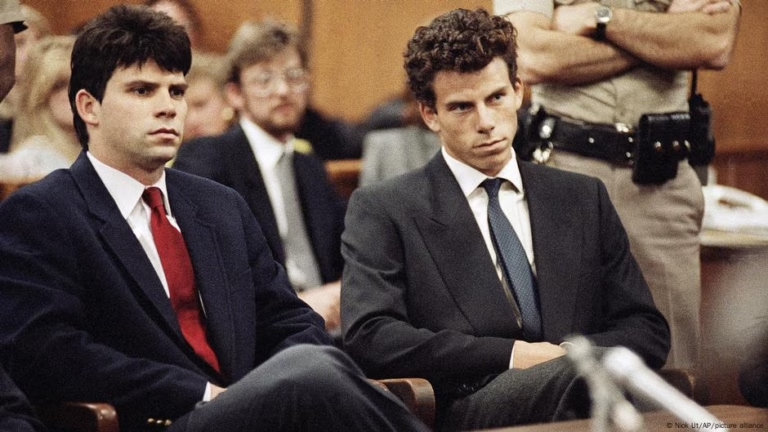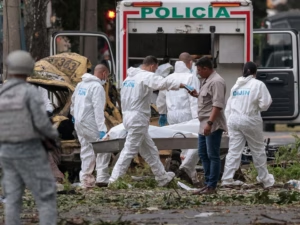Dozens of individuals were injured in the blast, which targeted a road adjacent to a military aviation school, as per the mayor’s office in Cali.
Hours before, a police helicopter was shot down in the department of Antioquia in northern Colombia, resulting in the deaths of 12 officers and injuries to several others.
The national police Black Hawk helicopter was transporting personnel to the rural Amalfi area to eradicate coca leaf crops, the raw material used to produce cocaine.
Antioquia governor Andres Julian stated in a post on X that a drone attacked the helicopter as it flew over coca leaf crops.
In a subsequent post, he questioned why authorities had not managed to rescue the injured or recover the bodies of the deceased nine hours after the helicopter was downed.
Spanish news agency EFE also reported that the injured and deceased had not been evacuated due to challenges in accessing the mountainous jungle area where the attack took place.
FARC splinter groups suspected behind both attacks
Colombia’s President Gustavo Petro and Defense Minister Pedro Sanchez accused the attacks on dissident factions of the Revolutionary Armed Forces of Colombia (FARC), a now-defunct leftist guerrilla group.
In a post on X, Petro referred to the helicopter attack as an “act of war” committed by the 36th Front of the Estado Mayor Central (EMC), one of the principal FARC splinter groups operating in northeastern Antioquia.
Over the years, the EMC has become heavily involved in criminal activities, particularly narcotics trafficking.
Sanchez, who had earlier stated that the Clan del Golfo cartel was responsible for the attack on the police helicopter, updated his statement to allege that E36 were behind the incident, citing recent police intelligence.
Regarding the attack near the military base in Cali, Sanchez attributed it to the Mordisco narco-cartel, another FARC splinter group. He described the attack as “a desperate reaction to the loss of control over drug trafficking” in the area.
Colombia experiences a rise in armed violence
Colombia is facing a dramatic escalation in violence from armed conflict, less than a decade after the 2016 peace accord between the government and FARC.
The drug trade remains a primary driver of this violence.
Colombia, a leading cocaine producer, has seen a rise in coca leaf cultivation. The area under cultivation reached a record 253,000 hectares in 2023, according to the latest UN Office on Drugs and Crime report.
Edited by: Karl Sexton





